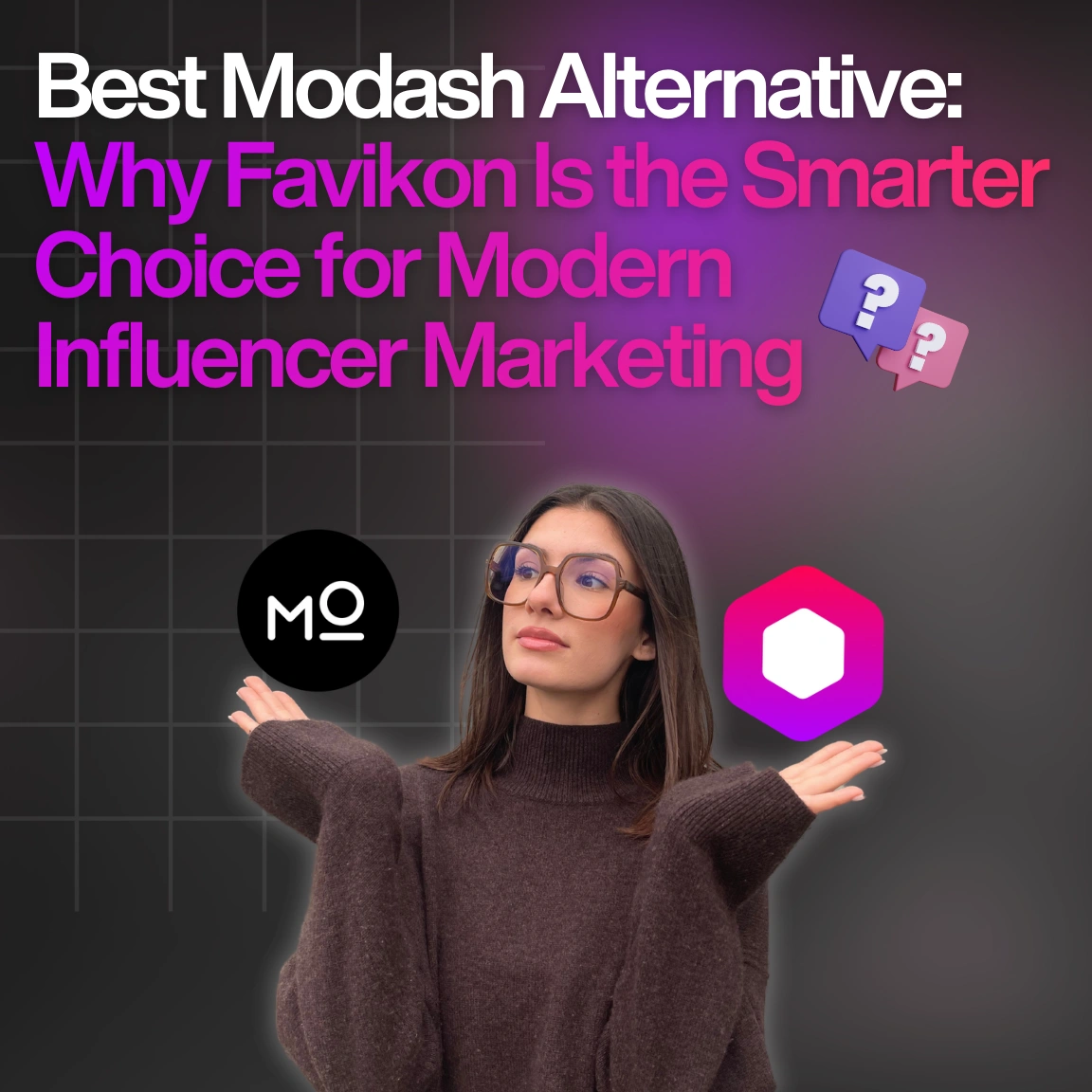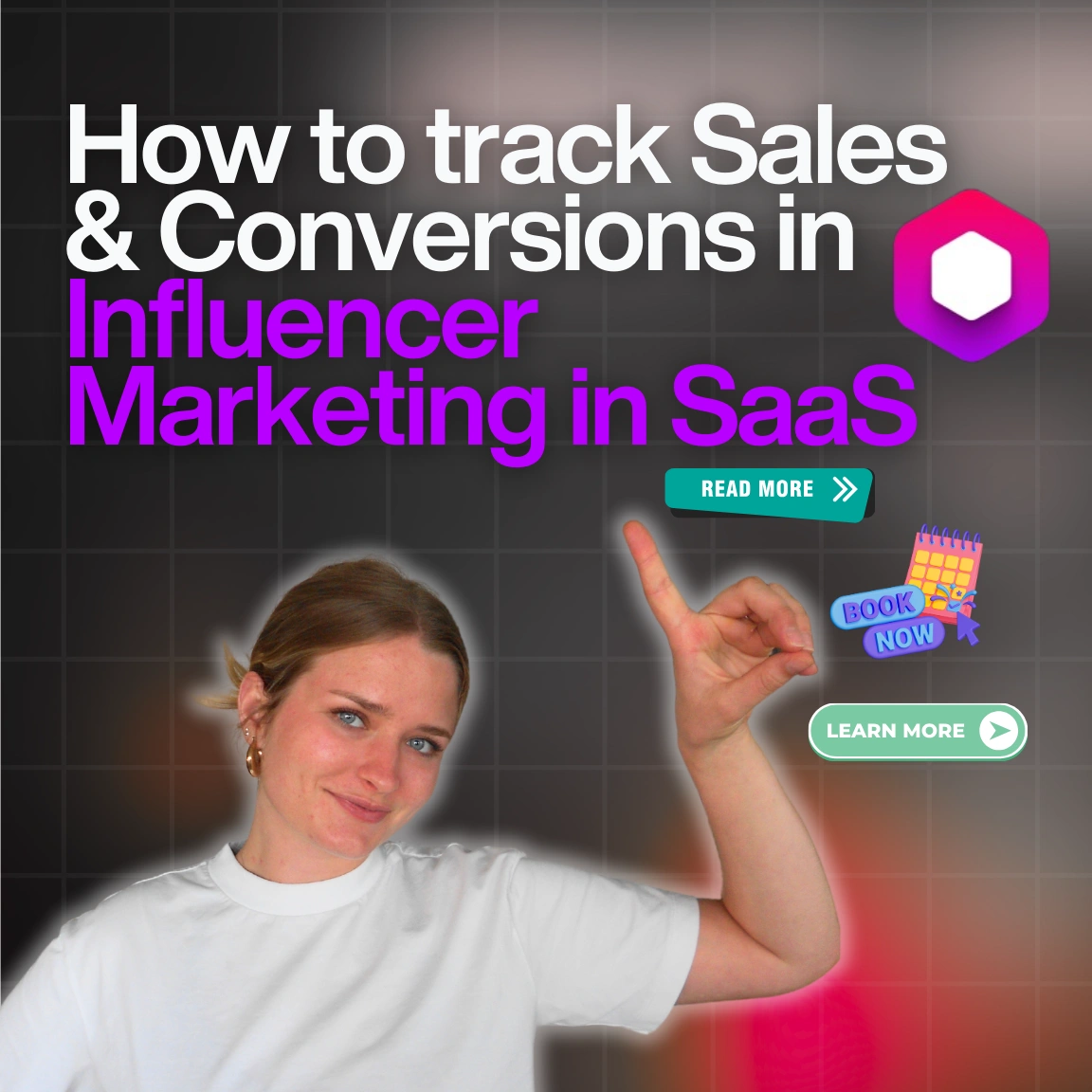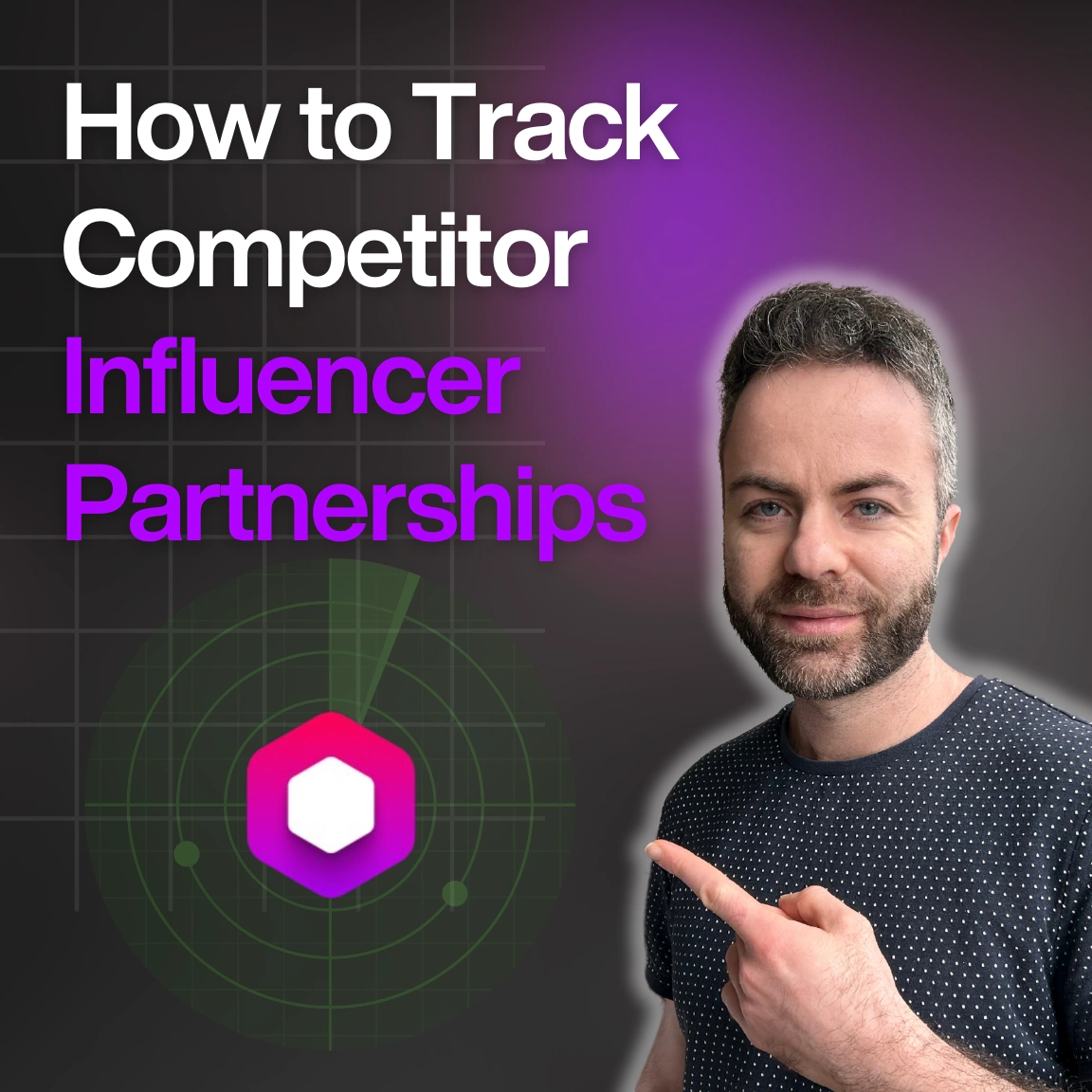Blog & Articles
Your ultimate ressource for the creator economy
Methodology & Rankings
About Favikon, rankings, tools & much more.
Insights
The recipe behind Favikon's viral & coveted rankings.
Free tools to power your influencer marketing workflows.
See Favikon users' success stories.
Get access to all Favikon rankings.
Become a Partner
Become an Affiliate
About the team behind Favikon
The place to talk creator economy, together


Featured Rankings

Here is the Top 50 Rising Video Creators on LinkedIn. Video is quickly becoming the platform’s most powerful format, with creators gaining more reach and engagement than ever. As Gen Z grows its presence and tools like BrandLink and Thought Leader Ads support content creation, LinkedIn is doubling down on video. This ranking, made in partnership with OpusClip, celebrates the creators leading this shift and aims to inspire anyone ready to start sharing through video.

Here is the Top 50 Rising Video Creators on LinkedIn. Video is quickly becoming the platform’s most powerful format, with creators gaining more reach and engagement than ever. As Gen Z grows its presence and tools like BrandLink and Thought Leader Ads support content creation, LinkedIn is doubling down on video. This ranking, made in partnership with OpusClip, celebrates the creators leading this shift and aims to inspire anyone ready to start sharing through video.
How to Identify the Perfect B2B Influencer for your Brand?
Finding the ideal B2B influencer can be the difference between a successful marketing campaign and one that falls flat. This guide will take you through a thorough, step-by-step process to ensure you choose the right influencer who aligns with your brand goals and audience.



Justine Castany, a student at ESSEC Business School and currently working at Favikon, shines with her love for marketing and dedication to communications. As a dynamic young professional, she serves as Marketing Manager at Favikon, where she brings her expertise to craft and execute cutting-edge strategies. With her creativity and keen eye for trends, Justine stands out in communicating brand messages effectively and making waves on social media.
Check Brand DealsHow to Identify the Perfect B2B Influencer for Your Brand
According to Mediakix, 89% of marketers believe that the ROI from influencer marketing is comparable to or better than other channels, which underscores the importance of selecting the right partner. Finding the ideal B2B influencer can be the difference between a successful marketing campaign and one that falls flat. This guide will take you through a thorough, step-by-step process to ensure you choose the right influencer who aligns with your brand goals and audience.
1. Define Your Objectives
Start by defining clear objectives for your campaign. Whether you want to boost brand awareness, generate leads, or promote a specific product, having a focused goal will help you narrow down your influencer choices. For example, if your aim is lead generation, seek out influencers known for nurturing engaged communities, not just having a massive following. Setting specific Key Performance Indicators (KPIs) such as engagement rates, follower growth, or conversion metrics will provide benchmarks to measure the success of your collaboration and allow you to make adjustments as needed.
Here are the possible campaign objectives:
• Brand Awareness ➔ Increase visibility and recognition of the brand. Expand reach to new audiences. Enhance brand positioning in the market.
• Lead Generation ➔ Capture new leads through content-driven strategies. Drive traffic to lead capture pages. Increase sign-ups for newsletters, webinars, or demos.
• Sales and Conversion ➔ Boost product sales and revenue. Encourage direct purchases or service subscriptions. Drive e-commerce traffic to a specific product line.
• Engagement and Community Building ➔ Increase social media engagement (likes, shares, comments). Foster community interaction and loyalty. Encourage user-generated content.
• Product Launch or Promotion ➔ Generate buzz around new product releases. Educate the market about new features or updates. Drive trial offers, downloads, or free trials.
• Educational Content ➔ Raise awareness about industry trends. Position the brand as a thought leader. Offer educational webinars, tutorials, or whitepapers.
• Reputation Management ➔ Enhance brand image and credibility. Address negative perceptions or feedback. Promote customer testimonials and case studies.
• Market Research and Feedback ➔ Collect customer feedback on products or services. Test new market segments or demographics. Gather insights for future product development.
• Event Promotion ➔ Increase attendance for webinars, conferences, or live events. Drive engagement before, during, and after events. Promote event-related content such as live streams and follow-ups.
• Customer Retention and Loyalty ➔ Enhance customer loyalty programs. Encourage repeat purchases. Increase customer lifetime value through upselling.
It’s essential to understand that your goals should guide every decision in this process. Without a clear objective, even a great influencer might not be effective for your campaign. If you are focused on increasing brand awareness, for example, your ideal influencer should be someone who can introduce your brand to a broader audience. On the other hand, if your goal is to drive sales, you need to find influencers whose audience trusts their recommendations and has a high intent to purchase. Clear objectives will help set the tone for the entire campaign, from initial outreach to measuring results.
2. Understand Your Audience
Knowing your audience is crucial for selecting the right influencer. Create detailed audience profiles that cover demographics, job roles, pain points, and interests. If your target audience is sales managers, for instance, you need an influencer who can speak their language and address their specific challenges. The clearer you are about your audience, the easier it is to find influencers whose followers share the same characteristics, ensuring that your marketing message will resonate and not get lost.

For example, Noemi Kis, a leading B2B influencer, attracts an audience of entrepreneurs and founders who are highly engaged with her content. However, a consumer product might not align well with her following, as her audience is more interested in business insights and entrepreneurial growth. Brands should consider this when choosing influencers, ensuring the product or service matches the interests of the influencer’s core audience to maximize campaign effectiveness.
Understanding where your audience is in the buyer’s journey is also essential. Are they in the awareness, consideration, or decision stage? This insight helps you find influencers who create content that aligns with your audience’s needs at that particular moment, ensuring a seamless connection between your brand and potential customers. An influencer effective in engaging audiences at the awareness stage might not be as impactful in pushing them toward a purchasing decision, so match your influencer’s strengths with your campaign goals.
3. Search for Niche Experts
The most effective B2B influencers are those who have built their reputation by specializing in a specific niche. For instance, if you’re in the software sector, partnering with an influencer who focuses on software development or tech reviews will add credibility to your brand. These experts are trusted by their audience because of their deep knowledge and consistent quality content. When looking for niche influencers, pay attention to their track record—do they have a history of sharing insights that resonate with industry professionals, or are they generalists?
Rather than focusing solely on follower count, assess the depth of their content. Review what they share to see if they dive into complex industry topics or only offer surface-level insights. High-quality, niche content typically indicates a deeper understanding of the industry and aligns better with your brand’s message. An influencer with a smaller but highly engaged audience can often be more valuable than a broad-reach influencer whose followers are not as invested or relevant to your niche.
4. Analyze Social Media Presence
When choosing an influencer, it’s important to analyze their presence on relevant social platforms. Different platforms cater to different audiences, and your choice should reflect where your target audience is most active. For B2B marketing, LinkedIn is often the go-to platform, but platforms like YouTube can be just as effective, especially for tutorials and in-depth product demonstrations. Choose influencers who are most active and effective on platforms where your target audience spends their time, ensuring that your message reaches the right people.

Some influencers can be on many social medias. Ross Pomerantz, a leading corporate influencer, is on 6 different social medias!
In addition to platform relevance, look at the quality of engagement an influencer’s posts receive. High engagement rates are good, but quality matters more. Examine the type of comments they get—are followers asking thoughtful questions and engaging in meaningful conversations, or are they leaving generic responses? High-quality engagement indicates that the audience is genuinely interested and trusts the influencer, which can lead to better results for your campaign.
5. Evaluate Content Quality
Review the past content of potential influencers to ensure it meets your brand’s standards. Consider how they present their ideas: Is their content clear, well-produced, and free of errors? Quality is key, especially in B2B marketing where professional presentation adds to credibility. Look at their visuals, captions, and engagement style to see if they align with your brand’s tone and values. Content that is easy to understand and engaging will help to effectively communicate your brand message.
Engagement levels are often a more telling metric than follower count. Influencers with fewer followers but higher engagement rates can be more effective than those with a massive, disengaged audience. For instance, a micro-influencer who regularly gets detailed comments and feedback from their audience may drive more conversions than a high-profile influencer with low interaction rates. Consistent quality and authentic engagement are indicators of an influencer’s ability to connect with their audience on a deeper level.
6. Check Authenticity and Values
Authenticity is a critical factor in B2B influencer marketing. Audiences today can easily spot when someone is promoting a product they don’t believe in, and they quickly lose trust. The right influencer should have a voice that sounds genuine, providing honest opinions and sharing personal experiences with your product or industry. When evaluating potential influencers, look for those who maintain transparency and authenticity in their content—these qualities build trust and make their endorsements more impactful.
Beyond authenticity, ensure the influencer’s values align with your brand’s mission. Collaborating with influencers who share similar values helps to build a more cohesive image. For example, if your brand promotes sustainability, an influencer known for advocating eco-friendly practices will align well with your messaging and help reinforce your brand’s mission. This alignment also minimizes the risk of any potential reputational issues that could arise from conflicting beliefs.
7. Analyze Metrics
To effectively measure an influencer’s impact, it’s important to analyze specific metrics. Engagement rate is a key indicator of how well an influencer connects with their audience. This metric, which measures likes, comments, and shares relative to their follower count, can tell you a lot about their ability to engage their followers. High engagement rates suggest a more involved and loyal audience, which typically leads to better campaign outcomes.
• Engagement Rate ➔ Measures likes, comments, and shares relative to the follower count, reflecting how well the audience connects with the content.
• Reach ➔ Indicates the number of unique users who have seen the influencer’s content.
• Impressions ➔ Tracks how often the influencer’s content appears on viewers’ feeds.
• Content Quality ➔ Assesses the professionalism, clarity, and originality of the content shared.
• Audience Growth ➔ Monitors changes in follower count over time to understand audience expansion.
• Consistency ➔ Measures how regularly and frequently the influencer posts content.
Beyond engagement, consider metrics like reach and impressions to understand the influencer’s visibility. Reach measures how many people see an influencer’s posts, while impressions tell you how often these posts appear in their audience’s feeds. Influencers who consistently generate high impressions and reach have strong visibility, which can amplify your brand message. Lastly, analyze their content performance to identify which types of posts perform best. Understanding this will help you craft a campaign that aligns with what their audience enjoys and engages with most.
In the end, use the Favikon Score to get a comprehensive evaluation of an influencer’s overall performance across all platforms. This score integrates key metrics like engagement rate, reach, content quality, and consistency, providing a holistic view of the influencer’s impact. By relying on this aggregated score, brands can make data-driven decisions, ensuring they select influencers who not only fit their niche but also demonstrate proven success in connecting with and influencing their audience.

8. Use Tools to Make Data-Driven Decisions
Leveraging analytics tools can simplify the process of selecting the right influencers. Platforms like Favikon can help you assess metrics such as engagement, audience demographics, and authenticity scores, providing a more comprehensive view of an influencer’s performance across platforms. These tools enable you to compare multiple influencers, streamline the decision-making process, and ensure you are making data-driven choices based on real insights, not just intuition.
Tracking your competitors’ influencer strategies can also be valuable. Observing who they are partnering with might reveal effective influencers you haven’t yet considered or provide insights into niche areas you might have overlooked. If you notice that a competitor frequently collaborates with a particular influencer, it could indicate that person’s strong influence in your industry, making them worth considering for your brand as well.
9. Shortlist and Vet Influencers
After gathering all the necessary information, create a shortlist of influencers who meet your criteria. Narrow down your list based on factors such as audience fit, engagement levels, content quality, and authenticity. The vetting process should be thorough—don’t rush this stage, as ensuring the right fit is critical for long-term success. Schedule interviews with the influencers on your shortlist to discuss their past experiences, collaboration potential, and communication style.
Direct conversations allow you to clarify expectations, set deliverables, and establish timelines, ensuring that both parties are aligned from the outset. It also gives you a sense of their professionalism and enthusiasm for the partnership, which are key factors in building a successful collaboration. If the influencer seems genuinely excited about your brand and campaign, they’re more likely to create authentic, engaging content that resonates with their audience.
10. Measure Campaign Success
Once your campaign is live, it’s essential to monitor its performance closely. Use your pre-defined KPIs to track metrics such as engagement, website traffic, lead generation, or any other key outcomes that align with your goals. Regularly reviewing these metrics will allow you to make real-time adjustments if something isn’t working as planned, optimizing your results during the campaign rather than waiting for a post-mortem analysis.
Whether your campaign succeeds or falls short, there’s always an opportunity to learn and refine your strategy. Analyze the data gathered from your influencer campaigns to understand what worked well and what could be improved. This insight will help you make more informed decisions in the future, ensuring that each subsequent collaboration is even more effective and targeted.
Selecting the perfect B2B influencer is not a one-size-fits-all process; it requires careful planning, analysis, and understanding of your brand’s goals and audience. By focusing on authenticity, engagement, and expertise, you can build impactful partnerships that drive results. Utilize tools like Favikon for deeper insights and keep refining your strategy with every campaign. With a strategic approach, B2B influencer marketing can be a powerful tool to boost your brand’s presence and credibility in the industry.
You might also find interesting:
The Ultimate Guide to B2B Influencer Marketing
5 reasons to use Influencer Marketing Tools
The different types of influencer marketing campaigns
How are B2B Influencers Paid?
How to find B2B influencers?
Related Articles
See all the articlesResources











.png)






.png)


